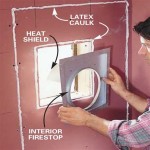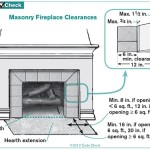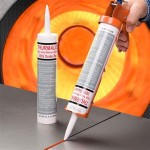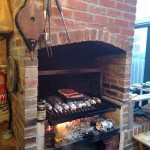Electric Fireplace Costs: A Comprehensive Guide
Electric fireplaces have become increasingly popular as a convenient, aesthetically pleasing, and relatively affordable alternative to traditional wood-burning or gas fireplaces. They offer the ambiance of a real fireplace without the mess, maintenance, or safety concerns. Understanding the various factors that influence the cost of purchasing and operating an electric fireplace is crucial for making an informed decision. This article provides a detailed breakdown of electric fireplace costs, covering initial purchase price, installation expenses, operational costs, and factors to consider when budgeting for this type of heating appliance.
Initial Purchase Price: Factors and Range
The initial purchase price of an electric fireplace is determined by several factors, including the type of fireplace, size, features, brand, and materials used in its construction. The market offers a diverse range of electric fireplaces, each with varying price points.
Types of Electric Fireplaces: Different types of electric fireplaces have varying price ranges. Wall-mounted electric fireplaces are often more affordable than freestanding units. Electric fireplace inserts, designed to fit into existing fireplace cavities, can range from mid-range to high-end depending on the level of realism and features. Electric fireplace mantels, which combine the fireplace unit with a decorative mantel, generally fall in the mid to high price range depending on the materials used and the complexity of the design. Electric stoves, resembling traditional wood-burning stoves, are often priced in the lower to mid-range. The complexity of the technology used to create the flame effects also significantly impacts the cost. More advanced flame simulation technologies often command higher prices.
Size and Dimensions: Larger electric fireplaces generally command higher prices due to the increased materials and manufacturing costs. The size of the unit directly impacts the heating capacity and the visual prominence of the fireplace in the room, further influencing the pricing.
Features and Functionality: Electric fireplaces come with a range of features that impact their cost. Units with advanced features such as adjustable flame settings, thermostat control, remote control operation, built-in timers, and zone heating capabilities tend to be more expensive. Models with integrated Bluetooth speakers or USB charging ports command a higher price as well.
Brand Reputation: Established brands with a strong reputation for quality and reliability often charge a premium for their products. These brands typically invest more in research and development, design, and customer support, justifying the higher price. Less established brands may offer similar features at lower prices, but their long-term reliability and performance may need further research.
Materials and Construction: The materials used in the construction of the electric fireplace also play a significant role in determining its cost. Models with high-quality wood mantels, durable metal frames, and realistic-looking faux brick or stone finishes tend to be more expensive than those made with cheaper materials.
Considering these factors, the initial purchase price of an electric fireplace can range from approximately $100 for a basic wall-mounted unit to upwards of $2,000 or more for a high-end electric fireplace mantel with advanced features and premium materials. A mid-range electric fireplace insert or freestanding unit typically costs between $300 and $800.
Installation Costs: DIY vs. Professional
The installation cost of an electric fireplace is highly variable, depending on the type of fireplace, the complexity of the installation process, and whether the homeowner chooses to perform the installation themselves or hire a professional electrician or contractor.
DIY Installation: Many electric fireplaces are designed for easy DIY installation, particularly wall-mounted units and freestanding models. These units typically require minimal assembly and can be plugged directly into a standard electrical outlet. In such cases, the installation cost is virtually negligible, limited to the cost of any necessary tools or hardware, such as screws or wall anchors. However, it is imperative to follow the manufacturer's instructions carefully and ensure that the electrical outlet is properly grounded and capable of handling the fireplace's power requirements.
Professional Installation: More complex installations, such as those involving electric fireplace inserts or electric fireplace mantels, may require professional assistance. Electric fireplace inserts, especially those requiring hardwiring or modifications to an existing fireplace cavity, typically necessitate the expertise of a qualified electrician. Similarly, installing an electric fireplace mantel may involve structural modifications to the wall or floor, requiring the services of a contractor. In these cases, the installation cost can range from $100 to $500 or more, depending on the complexity of the project and the hourly rate of the professional.
Electrical Considerations: If the electric fireplace requires a dedicated electrical circuit or wiring modifications, the cost of installation will increase significantly. A qualified electrician can assess the electrical capacity of the home and determine whether additional wiring is necessary. The cost of installing a new electrical circuit can range from $150 to $500, depending on the distance from the electrical panel and the complexity of the wiring.
Permits and Inspections: In some jurisdictions, installing an electric fireplace may require obtaining permits and inspections. This is particularly true for installations involving electrical work or structural modifications. The cost of permits and inspections varies depending on the local regulations and can range from $50 to $200 or more.
Choosing between DIY and professional installation depends on the homeowner's skill level, the complexity of the installation, and local regulations. If the homeowner is comfortable with basic electrical work and has experience with similar projects, DIY installation may be a viable option. However, for complex installations or when unsure about electrical safety, it is always best to hire a qualified professional.
Operational Costs: Electricity Consumption and Efficiency
The operational cost of an electric fireplace is primarily determined by its electricity consumption. Electric fireplaces typically use between 1,000 and 1,500 watts of electricity when running at full heat. The actual cost to operate the fireplace depends on the local electricity rates and the frequency of use.
Calculating Electricity Consumption: To estimate the operational cost, one can use the following formula: (Watts / 1000) x Hours of Use x Electricity Rate per Kilowatt-Hour (kWh) = Cost. For example, if an electric fireplace consumes 1,500 watts and is used for 4 hours per day with an electricity rate of $0.15 per kWh, the daily cost would be (1,500 / 1000) x 4 x $0.15 = $0.90. The monthly cost would then be $0.90 x 30 = $27.00.
Factors Affecting Electricity Consumption: Several factors influence the electricity consumption of an electric fireplace. The heating setting is a primary factor; running the fireplace at a lower heat setting will consume less electricity. The insulation of the room where the fireplace is located also plays a role; a well-insulated room will retain heat more effectively, reducing the need to run the fireplace at full power. The thermostat setting also affects electricity consumption; setting the thermostat to a comfortable temperature will prevent the fireplace from running unnecessarily.
Energy Efficiency: Some electric fireplaces are more energy-efficient than others. Models with advanced features such as zone heating, which allows the user to heat only a specific area of the room, can help reduce energy consumption. Electric Fireplaces with LED flame effects consume less electricity than those with incandescent bulbs. Look for models with an Energy Star rating. While Energy Star ratings are more common for larger appliances, some electric fireplaces incorporate energy-saving technologies.
Alternative Heating Options: Compared to other heating options, electric fireplaces can be relatively cost-effective. They are typically more efficient than space heaters, which often consume a significant amount of electricity. Compared to central heating systems, electric fireplaces can be a more economical option for heating a single room or zone. However, for heating an entire home, a central heating system is generally more efficient.
Understanding the electricity consumption and energy efficiency of an electric fireplace is crucial for managing operational costs. By using the fireplace judiciously, setting the thermostat appropriately, and choosing an energy-efficient model, homeowners can minimize their energy bills while enjoying the warmth and ambiance of an electric fireplace.
Beyond the primary factors of purchase, installation, and operational costs, several other considerations can influence the overall cost of owning and operating an electric fireplace. These factors include maintenance, repairs, and the lifespan of the unit.
Maintenance Costs: Electric fireplaces generally require minimal maintenance. Unlike traditional fireplaces, there is no need to clean up ash or soot, or to maintain a chimney. The primary maintenance task is to occasionally clean the glass screen or the exterior surfaces of the fireplace. The cost of cleaning supplies is minimal, typically less than $10 per year. In some cases, the light bulbs that illuminate the flame effect may need to be replaced. LED bulbs have a longer lifespan than incandescent bulbs, reducing the frequency of replacements. The cost of replacement bulbs varies depending on the type and quality, but is generally less than $20 per bulb.
Repair Costs: Electric fireplaces are generally reliable, but like any appliance, they may occasionally require repairs. Common repairs include replacing heating elements, motors, or control panels. The cost of repairs depends on the specific issue and the labor rate of the repair technician. Simple repairs, such as replacing a heating element, may cost less than $100. More complex repairs, such as replacing a control panel, may cost several hundred dollars. Purchasing an electric fireplace from a reputable brand with a good warranty can help mitigate the risk of costly repairs. Some warranties cover both parts and labor for a specified period, providing peace of mind and reducing the financial burden of potential repairs.
Lifespan and Replacement Costs: The lifespan of an electric fireplace varies depending on the quality of the unit and the frequency of use. A well-maintained electric fireplace can last for 10 years or more. The heating elements may need to be replaced sooner, typically after 5 to 7 years of regular use. When the electric fireplace reaches the end of its lifespan, it may be necessary to replace the entire unit. The replacement cost will depend on the type of fireplace and the features desired. It is important to factor in the replacement cost when budgeting for the long-term ownership of an electric fireplace.
By considering these additional factors, homeowners can develop a more comprehensive understanding of the total cost of owning and operating an electric fireplace over its lifespan. This can help them make informed decisions about purchasing, maintaining, and eventually replacing the unit.

How Much Does An Electric Fireplace Cost Dreifuss Fireplaces

How Much Does An Electric Fireplace Cost 2024 Data Angi

Are Electric Fireplaces Expensive To Operate Dimplex

ᑕ❶ᑐ How Much Does It Cost To Run An Electric Fireplace

How Much Does It Cost To Run Electric Fireplace In 2024

How Much Does An Electric Fireplace Cost Dreifuss Fireplaces

ᑕ❶ᑐ How Much Do Fireplace Built Ins Cost Get The Guide

How Much Does An Electric Fireplace Cost Dreifuss Fireplaces

Cost Of Using An Electric Fireplace Modern Flames

Fireplace Usage Cost Calculator








